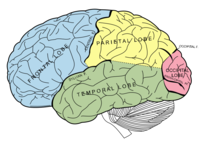A Possible New Treatment for Attention Deficit Disorder

Although I am always eager to use non-pharmacological treatments whenever possible, sometimes it just isn’t possible to us them on their own. I’ve outlined some of the reasons for treating attention deficit disorder (ADD) in a previous post.
We should soon hear whether the regulatory authorities in the United States and Europe are going to approve a medicine – guanfacine – that we currently use for treating high blood pressure, for the treatment of ADD. In the United States it is currently sold under the trade name Tenex. The medicine works in the brain by modulating a population of receptors known as the central nervous system α-2 adrenergic receptors, which results in reduced sympathetic outflow leading to reduced vascular tone. Its adverse reactions include dry mouth, sedation, and constipation.
The idea of using a medicine like this for treating ADD is not new. Fifteen years ago researchers showed that receptor agonists like clonidine decreased distractibility in aged monkeys. And clonidine itself has occasionally been used for treating ADD for over twenty years.
Guanfacine seems to have some unique properties including decreasing the activity in the caudate nucleus while increasing frontal cortical activity. We would therefore expect it not only to help with ADD symptoms, but it may have some quite specific properties relating to learning new material. A key point is that if approved it will only be the second nonstimulant medicine for ADD, along with atomoxetine (Strattera). Many clinicians have had a lot of trouble with side effects of atomoxetine, particularly if it is used in adult men. So if guanfacine is approved, and if it does not have the same side effects, that would be a big bonus.
New options are always welcome, but it remains important for any new pharmacological treatment to be nested in an Integrated approach, which always includes nutrition, physical and cognitive exercises, psychological and social help, as well as attending to the subtle and spiritual aspects of the problem.
And ADD can be a very big problem, despite the protestations from people who claim that it is a non-disease dreamed up by pharmaceutical companies. Our interest is not just professional, but personal. Every single day we see what can happen if someone forgets their medicine.
If the FDA gives approval for guanfacine I shall immediately report it for you, as well as giving you details of all the safety and tolerability data.







Dr. Petty,
What are your thoughts on the concept of differentiating instruction based on gender. I’ve been conducting trainings on this topic (I can send you the course descriptions if you’re interested) for the past several months and I think another perspective would be enlightening.
Thank you,
Reg Adkins
Dear Reg,
Do you mean in people with ADD?
There are enormous gender differences between boys and girls and men and women with ADD, and they need very different approaches in all five domains.
Kind regards,
RP
Dr Petty, I thought I would pass this along for your comments.
Guanfacine no more effective than a placebo
http://www.news-medical.net/?id=21172
Dear Stuart,
Thank you for sending this. I had seen the original paper.
I wasn’t surprised to see that guanfacine was ineffective in this study of PTSD. The study design looked quite good to me, and I think that we can trust the results. The difficulty is the concept. The idea was that since there is some data on the use of propranolol in acute PTSD, that attacking the norepinephrine system from this direction might be effective. But the most recent data have suggested that the biochemical disturbances in PTSD are rather more subtle.
I don’t think that it’s going to have any impact on the FDA’s deliberations concerning guanfacine and ADD.
Kind regards,
RP
I regret the long delay. I have been deployed on crisis teams for the past months. Yes, ADD accross gender; but not only gender but variences in interpretation of the essence of ADD in people of color as well.